Finding Pain Relief From the Kitchen: The 9 Best Foods for Your Joints
by Greg Bastin on Dec 19, 2019

By Tracy Liu • December 19, 2019
Find out how your diet can help your joint pain.
Does chronic joint pain keep you from your favorite activities?
People who suffer from chronic joint pain suffer on a daily basis. It isn’t just an occasional thing that crops up from time to time. It’s an ongoing pain that most sufferers can only hope to keep at a “tolerable” level.
Nowadays, everyone knows about the benefits of having a healthy diet and eating the right food. It can help to keep numerous ailments at bay. And that includes joint pain.
You can often overcome some causes of joint pain with small changes in your diet.
Ready to go through a pain-free day?
It may be within your grasp with a few simple dietary adjustments.
The Causes and Symptoms of Joint Pain
Joints are the parts of your body that allow bones to move. When someone describes joint pain, it can range from discomfort to soreness. It’s a common occurrence, but sometimes it’s the result of an illness or injury.
Osteoarthritis or OA is a common complaint in adults over 40 years old. It progresses slowly and affects commonly used joints like the knees and hands.
According to the Arthritis Foundation, rheumatoid arthritis affects over 1.5 million people in the United States. And women are more at risk than men of having RA.
Some other causes of joint pain could include bursitis, osteoporosis, and gout. Common symptoms for joint pain are:
- ➡️ Pain
- ➡️ Tenderness
- ➡️ Soreness
In some cases, like with RA, pain sufferers may see some swelling around the joint. Sometimes a balanced diet can lessen or improve symptoms of chronic pain. That’s why it’s so important to eat healthily.
Foods for Joint Pain
Can you eat your way to better health?
Focusing on a healthy diet can fight inflammation, a common cause for pain. Check out these foods for joint pain relief for your next meal:
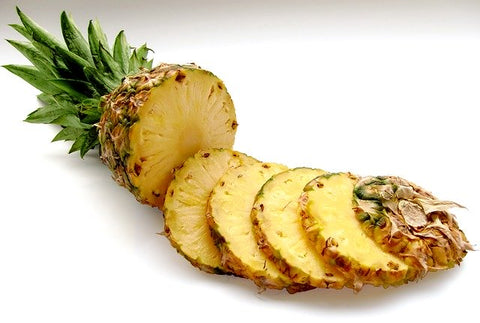
1. Pineapple
Pineapple is a good source of vitamin C. But joint pain sufferers may be more interested in another component in pineapple – bromelain. This group of enzymes helps break down protein.
Bromelain has anti-inflammatory effects that are similar to ibuprofen. Studies have shown that it can reduce knee pain, as well as symptoms for both RA and OA. It also increases the feelings of well-being in otherwise healthy adults.

2. Cherries
If you have inflammation in your body, it causes oxidative stress. It’s a feedforward cycle.
Oxidative stress causes pain and inflammation. That, in turn, causes further oxidative stress.
One way to break the cycle is to eat foods with a high level of antioxidants. All fruits and vegetables are good for your body. But some contain more antioxidants than others.
Cherries are a great choice for countering oxidative stress. According to one study by the University of Michigan, it decreases inflammation.
A review cited that eating cherries decreased markers of oxidative stress in eight of ten studies. According to the same review, there are other health benefits from eating cherries. Some examples include reduced risk of heart disease and symptoms of arthritis.
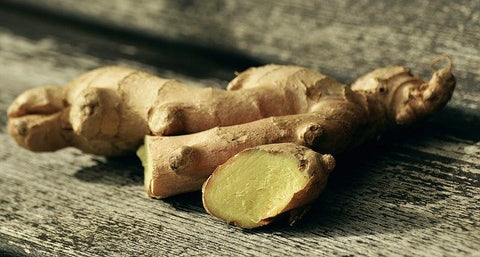
3. Ginger
Ginger is a popular root used throughout the world. It’s used in tea and in food around the world. It’s a popular remedy for soothing an upset stomach. But it also has benefits that may help joint pain sufferers.
The active substance in ginger is gingerol. According to several small studies, it may help in reducing inflammation and joint pain. The University of Miami’s study found that it was especially effective on knee pain for OA sufferers.
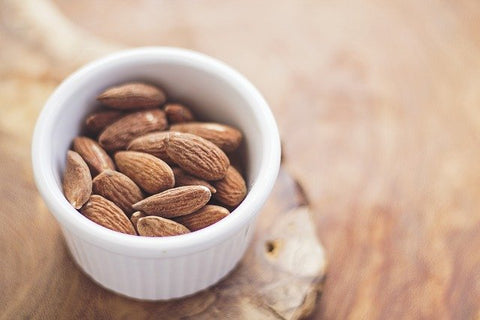
4. Almonds
Almonds are a good nut to incorporate into your diet for overall health. It is a rich source of vitamin E, manganese, and omega-3 fatty acids. It’s the omega-3s that can help joint pain suffers.
Omega-3s can help reduce inflammation which may benefit RA sufferers. In addition, the vitamin E component of the nut contains antioxidants that can help lower oxidative stress.
The last component, manganese, helps glucosamine repair the joints.
Glucosamine is a naturally occurring amino sugar in the cartilage. It’s responsible for building and maintaining the cartilage in your joints. And the manganese in almonds can help with that.
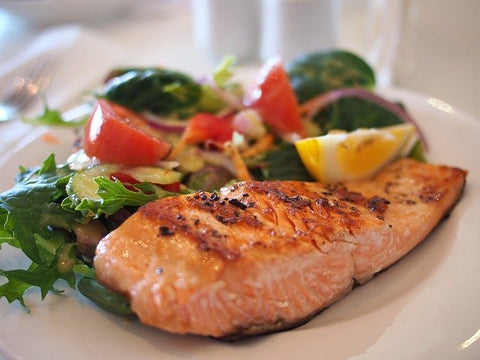
5. Fatty Fish & Healthy Oils
Fatty fish oil is famously healthy for your overall diet. The category includes fishes like mackerel, tuna, herring, and salmon. These contain high levels of omega-3s that help with reducing pain and inflammation.
In addition, healthy oils are also a good choice to add to your diet. Oils like extra virgin olive oil contain a monounsaturated fat called oleic acid.
Studies show that this acid can help reduce inflammation and pain. Scientists found that the oil has a similar effect as ibuprofen.
Coconut oil is another healthy oil for inflammation. One study suggests that eating coconut oil can reduce oxidative stress and inflammation.
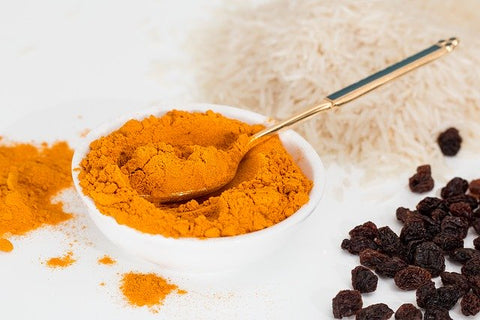
6. Turmeric
Turmeric is the unsung hero of spices. This vibrant yellow spice does more than adding flavor to curry dishes. It has a variety of health benefits due to one special component – curcumin.
According to one study by the University of Arizona, it can protect against joint deterioration. In addition, it may also reduce inflammation caused by RA.
One review examined data from eight clinical trials. The authors concluded that curcumin could help with joint arthritis symptoms. Also, data indicated that it has similar effects on ibuprofen and could help reduce pain.
The active ingredient in turmeric, curcumin, is a potent antioxidant. But it doesn’t just protect your body from free radicals. It also increases the antioxidant capacity of your own body.
You can incorporate turmeric into your cooking or drink it in a tea. Order Opportuniteas Turmeric Tea to take full advantage of its benefits.

7. Garlic
Garlic is another wonderful ingredient to add to your diet. According to one study in 2009, it’s great for swollen joints. Inflammation reduction is just part of the story. It may also help stimulate the body’s immune cells.
Try adding it to your next dish. It does have a strong flavor. So, if you don’t want to contend with eating it, you can always opt to take garlic supplements.

8. Hot Peppers
If you’re not afraid of a little heat, hot peppers also have great properties for joint health. Think along the lines of serrano or habanero peppers. These peppers have high levels of capsaicin.
Capsaicin has numerous health properties like reducing blood pressure, pain, and inflammation. Generally, the hotter the pepper the more capsaicin it contains. So, mild peppers may not have the same effects.
If you can’t handle the heat, you may want to opt for capsaicin supplements. You’ll still reap the benefits without setting your mouth on fire.

9. Mediterranean Diet
Finally, this isn’t necessarily a single food. But it bears mentioning on this list.
Any diet that eliminates processed food is better for your overall health. The focus of this diet is primarily on fresh produce and fish. People who follow this diet use a lot of unsaturated fats and reduce the consumption of red meat.
Researchers found that foods commonly eaten in this diet can reduce inflammation. Not all foods are black and white, though.
You need a certain amount of omega-6 fatty acids in your diet. But too much can cause an inflammatory response.
The same goes for dairy. Researchers have conflicting data about whether or not dairy products are bad for you. It really boils down to your own sensitivity.
If you do notice that your joint pain flares after eating dairy, you may want to limit it or find a substitute.
Eat These Foods For Better Joint Health
You are what you eat. When you eat inflammatory foods, it can trigger the same response in your body. Conversely, eating anti-inflammatory foods can help the body combat it for better joint health.
Incorporating fresh produce, fatty fish, and healthy oils are good options. Adding ginger and turmeric into your daily diet is also beneficial for better joint health.
Adding turmeric to your daily meals isn’t always practical. Turmeric tea is a great option and substitute. It’s just as effective and easy to include in your routine.
Try some of these foods today to start your journey towards better joint health.




